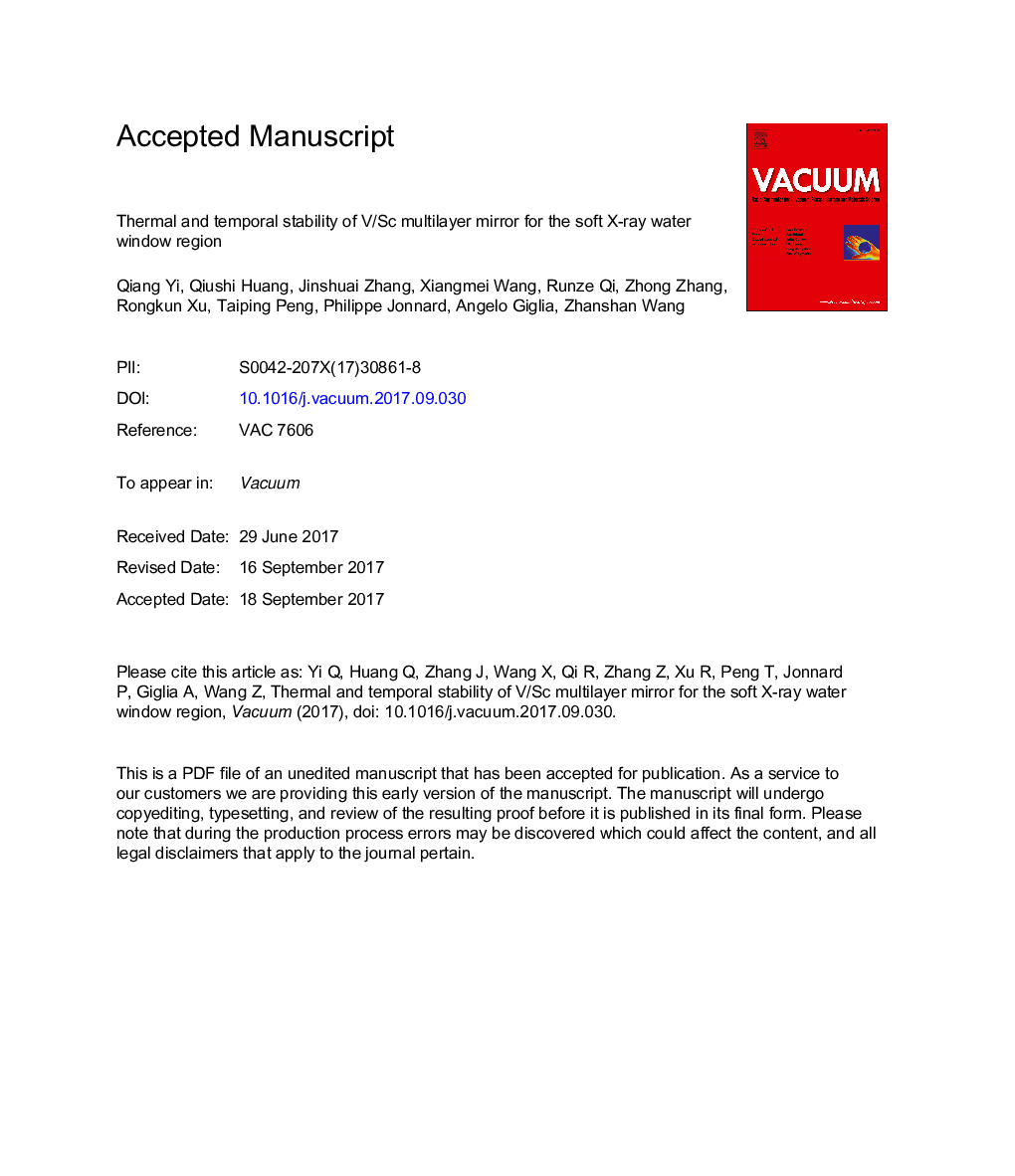| Article ID | Journal | Published Year | Pages | File Type |
|---|---|---|---|---|
| 5467986 | Vacuum | 2017 | 13 Pages |
Abstract
V/Sc multilayer has been developed as a promising candidate for the water window region working near both the Sc-L edge (3.11 nm) and the V-L edge (2.42 nm). To meet the application requirements, its thermal and temporal stability were studied. A series of V/Sc multilayers with a d-spacing ranging from 1.59 to 1.62 nm and a number of bilayers of 100 and 400 was fabricated. Different samples were annealed at temperatures from 100 to 300 °C. Grazing incidence X-ray reflectivity and soft X-ray (SXR) reflectivity measurements showed that the multilayer structure and reflectivity remain mostly unchanged at 100 °C. An obvious deterioration started at 200 °C, while the SXR reflectivity drops close to zero at 250 °C. The multilayer structure completely broke down at 300 °C. Both X-ray diffraction and transmission electron microscopy measurements demonstrated a severe crystallization occurring at 250 °C. Energy dispersive X-ray spectroscopy measurements have further confirmed a significant elemental mixture occurring after 250 °C annealing. The severe intermixing and polycrystallization resulted in the degradation of the multilayer structure. On the other hand, the V/Sc multilayer is relatively stable after half year storage in air environment showing a slight decrease of SXR reflectivity from 18.4% to 16.5%.
Related Topics
Physical Sciences and Engineering
Materials Science
Surfaces, Coatings and Films
Authors
Qiang Yi, Qiushi Huang, Jinshuai Zhang, Xiangmei Wang, Runze Qi, Zhong Zhang, Rongkun Xu, Taiping Peng, Philippe Jonnard, Angelo Giglia, Zhanshan Wang,
